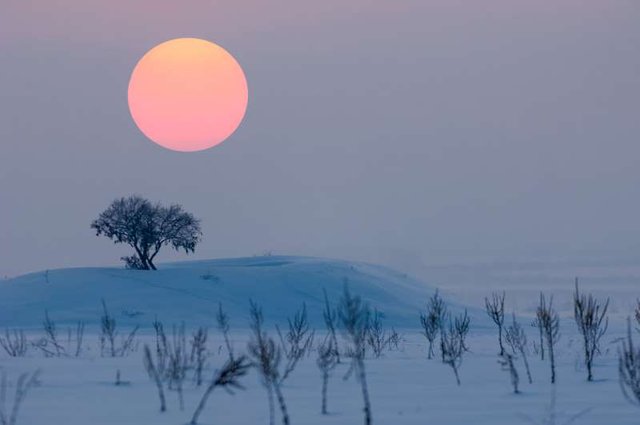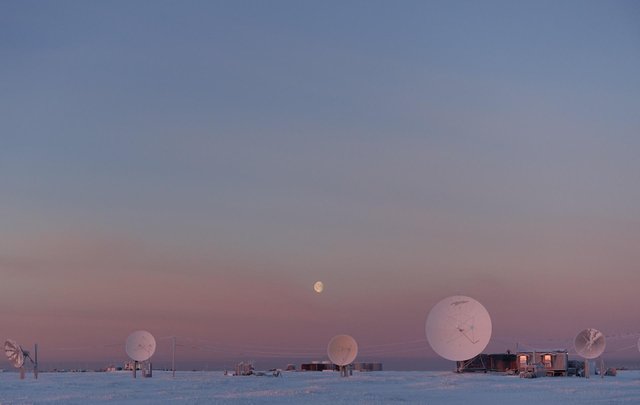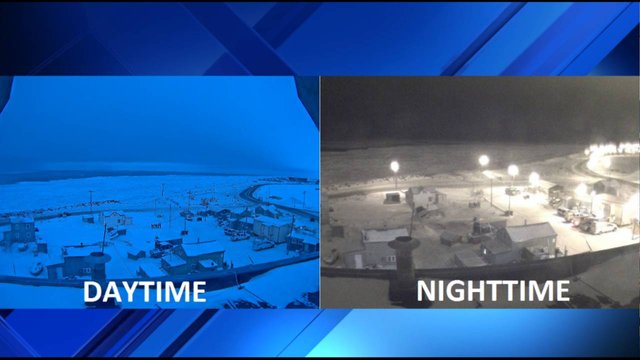For the first time in 66 days, the sun will rise in the northernmost U.S. city...

Wednesday is uncommon in Utqiagvik, some time ago known as Barrow, Alaska, for reasons that don't sound especially unique. That morning, the sun will ascend there — without precedent for 66 days.
The nation's northernmost town, with a populace of 4,300 individuals, is additionally one of the northernmost networks on the planet, at a scope of 71.2 degrees north. That puts it well into the Arctic Circle, where polar night — the piece of winter when the sun doesn't come over the skyline — throws a very long time of obscurity.
Utqiagvik hasn't seen the sun since Nov. 18. On Wednesday, a passing portion of the sun will show up in the south start at 1:04 p.m. nearby time and sink underneath the skyline around a hour later, at 2:14 p.m. The sun powered circle will never be more than mostly over the skyline, so chances are that it will be difficult to see from the town, except if occupants' perspectives are free of structures, trees or even bushes at ground level.
The adjustment in sunlight between the seasons gets increasingly outrageous toward the posts. While winter is long, dim and savage in Utqiagvik, inhabitants additionally appreciate over two months of perpetual sunlight in the mid year.
That emotional flip of the coin is on account of Earth's tilt. The planet inclines about 23.5 degrees on its pivot, clarifying why globes are collected purposefully off center.

Moon Rise in barrow(Utqiagvik).
In the mid year, the north post of the hub tilts toward the sun, and the Northern Hemisphere gets the most immediate daylight. The days get long, and daylight warms the ground. In spots at the "highest point of the world, for example, northern Alaska, the sun is up every minute of every day. In the winter, the inverse is valid.
Utqiagvik's days will slowly protract until May 12, when the sun won't set until Aug. 2. This expansion in sunshine is most extraordinary in coming weeks: Thursday will highlight 33 a bigger number of minutes of light than Wednesday, and continuously, Utqiagvik will lounge in daylight for more than 2½ hours every day.
Despite the fact that Utqiagvik sees two straight long stretches of daylight in the late spring, the normal July high temperature is just 47 degrees. That is on the grounds that the sun is sparkling at a low edge, so Utqiagvik gets just the edges of daylight extended over a more extensive territory. A light emission needs to cover a more area at the shafts than the equator, so it's less powerful at warming the ground.

Daytime and Nighttime in Barrow...What the Hell No Sun....
In the winter, outrageous virus sets in. Utqiagvik's normal daily low in February is less 20. The temperature hasn't move over 32 degrees since Nov. 1. Strangely, Utqiagvik gets less snow than Boston or Denver, as it's cold to the point that barely any water makes it into the air.
Congratulations @siddiquinadeem! You have completed the following achievement on the Steem blockchain and have been rewarded with new badge(s) :
Click here to view your Board
If you no longer want to receive notifications, reply to this comment with the word
STOP